-
 Bitcoin
Bitcoin $88,339.1961
0.91% -
 Ethereum
Ethereum $1,623.6446
-1.44% -
 Tether USDt
Tether USDt $1.0000
0.00% -
 XRP
XRP $2.0967
-1.79% -
 BNB
BNB $605.9401
0.19% -
 Solana
Solana $139.2951
-0.86% -
 USDC
USDC $0.9999
0.00% -
 Dogecoin
Dogecoin $0.1638
0.91% -
 TRON
TRON $0.2483
1.38% -
 Cardano
Cardano $0.6385
-1.29% -
 Chainlink
Chainlink $13.3308
-1.87% -
 Avalanche
Avalanche $20.1673
-2.64% -
 UNUS SED LEO
UNUS SED LEO $9.0629
-4.15% -
 Stellar
Stellar $0.2460
-5.31% -
 Sui
Sui $2.3030
1.33% -
 Shiba Inu
Shiba Inu $0.0...01249
-1.52% -
 Toncoin
Toncoin $2.9244
-3.95% -
 Hedera
Hedera $0.1729
-0.43% -
 Bitcoin Cash
Bitcoin Cash $346.6981
1.20% -
 Hyperliquid
Hyperliquid $18.1539
-1.20% -
 Litecoin
Litecoin $79.7883
-1.84% -
 Polkadot
Polkadot $3.7535
-5.04% -
 Dai
Dai $0.9999
-0.01% -
 Bitget Token
Bitget Token $4.4438
-1.20% -
 Ethena USDe
Ethena USDe $0.9992
0.00% -
 Pi
Pi $0.6312
-1.10% -
 Monero
Monero $217.0320
0.33% -
 Pepe
Pepe $0.0...08106
3.02% -
 Uniswap
Uniswap $5.3710
-1.84% -
 OKB
OKB $50.9721
-0.22%
What is a Halo recursive proof on a blockchain?
Halo recursive proofs enhance blockchain efficiency by aggregating multiple proofs into one, reducing computational load and enhancing transaction privacy.
Apr 13, 2025 at 05:29 am
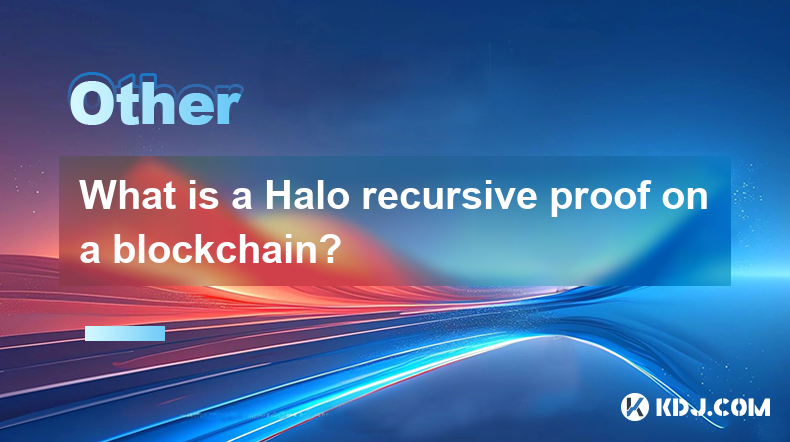
A Halo recursive proof on a blockchain represents a groundbreaking advancement in the field of cryptographic proofs, specifically tailored to enhance the efficiency and scalability of blockchain networks. Halo proofs, developed by the team at Electric Coin Company, are a type of zero-knowledge proof (ZKP) that allows for the verification of computations without revealing the underlying data. The recursive aspect of Halo proofs means that these proofs can be aggregated and verified together, significantly reducing the computational burden on the blockchain.
Understanding Zero-Knowledge Proofs
Zero-knowledge proofs are cryptographic protocols that allow one party (the prover) to prove to another party (the verifier) that a statement is true without revealing any information beyond the validity of the statement itself. In the context of blockchains, ZKPs are used to ensure transaction privacy and enhance network scalability. Traditional ZKPs, however, can be computationally intensive and may not be suitable for large-scale blockchain applications. This is where Halo proofs come into play, offering a more efficient alternative.
The Mechanics of Halo Proofs
Halo proofs operate on the principle of recursive composition. This means that multiple proofs can be combined into a single proof, which can then be verified with minimal computational resources. The process involves generating proofs for individual statements and then recursively aggregating these proofs into a final proof that can be verified on the blockchain. This recursive nature allows for a significant reduction in the amount of data that needs to be stored and processed on the blockchain, thereby enhancing its scalability.
Benefits of Halo Recursive Proofs on Blockchains
The implementation of Halo recursive proofs on blockchains offers several key benefits. First, it significantly reduces the storage and processing requirements for the blockchain, as only the final aggregated proof needs to be stored and verified. Second, it enhances the privacy of transactions, as the underlying data remains hidden even during the verification process. Third, it allows for more complex computations to be performed off-chain and then verified on-chain, thereby increasing the efficiency of the blockchain network.
Implementing Halo Recursive Proofs
To implement Halo recursive proofs on a blockchain, several steps need to be followed:
- Generate Individual Proofs: Begin by generating individual proofs for each statement that needs to be verified. These proofs can be generated off-chain using specialized hardware or software designed for ZKP computations.
- Aggregate Proofs: Use the recursive composition feature of Halo proofs to aggregate the individual proofs into a single proof. This step involves combining the proofs in a manner that preserves their validity while reducing the overall size of the proof.
- Verify the Final Proof: The final aggregated proof is then submitted to the blockchain for verification. The blockchain nodes use a lightweight verification process to confirm the validity of the proof without needing to process the individual proofs.
- Store and Process the Proof: Once verified, the final proof is stored on the blockchain, and any subsequent transactions or computations can reference this proof as needed.
Practical Applications of Halo Recursive Proofs
Halo recursive proofs have several practical applications within the cryptocurrency ecosystem. One key application is in the field of decentralized finance (DeFi), where complex financial computations need to be verified on-chain. By using Halo proofs, these computations can be performed off-chain and then verified on-chain, thereby reducing the load on the blockchain and enhancing its scalability. Another application is in the realm of privacy-focused cryptocurrencies, where Halo proofs can be used to ensure the privacy of transactions without compromising the integrity of the blockchain.
Challenges and Considerations
While Halo recursive proofs offer significant advantages, there are also several challenges and considerations to keep in mind. One challenge is the complexity of generating and verifying these proofs, which may require specialized hardware or software. Another consideration is the need for robust security measures to prevent attacks on the proof generation and verification process. Additionally, the adoption of Halo proofs may require changes to existing blockchain protocols, which could be a barrier to their widespread implementation.
Frequently Asked Questions
Q: How do Halo recursive proofs compare to other types of zero-knowledge proofs?
A: Halo recursive proofs are unique in their ability to aggregate multiple proofs into a single proof, which can then be verified with minimal computational resources. This sets them apart from other ZKPs, such as zk-SNARKs and zk-STARKs, which may not offer the same level of efficiency in proof aggregation.
Q: Can Halo recursive proofs be used on any blockchain?
A: While Halo recursive proofs can theoretically be implemented on any blockchain, their practical implementation may depend on the specific features and capabilities of the blockchain in question. Some blockchains may require modifications to their protocols to support Halo proofs effectively.
Q: What are the potential risks associated with using Halo recursive proofs?
A: The main risks associated with Halo recursive proofs include the potential for errors in the proof generation process, which could lead to invalid proofs being accepted by the blockchain. Additionally, there is a risk of attacks on the proof verification process, which could compromise the integrity of the blockchain.
Q: How can developers ensure the security of Halo recursive proofs on a blockchain?
A: Developers can ensure the security of Halo recursive proofs by implementing robust security measures at every stage of the proof generation and verification process. This includes using secure hardware and software for proof generation, implementing thorough testing and validation procedures, and ensuring that the blockchain's verification process is resistant to attacks.
Disclaimer:info@kdj.com
The information provided is not trading advice. kdj.com does not assume any responsibility for any investments made based on the information provided in this article. Cryptocurrencies are highly volatile and it is highly recommended that you invest with caution after thorough research!
If you believe that the content used on this website infringes your copyright, please contact us immediately (info@kdj.com) and we will delete it promptly.
- AVAX Price Prediction 2025: Will Avalanche Reach New Heights?
- 2025-04-22 17:50:12
- XRP Price Prediction Shows Bullish Momentum After Coinbase Lists Its Futures Contracts
- 2025-04-22 17:50:12
- Bitcoin is surging again, capturing the spotlight in the crypto world.
- 2025-04-22 17:45:12
- Pi Network (PI) Holds Above $0.63: $5 Price Prediction and Whale Accumulation Fuel Optimism
- 2025-04-22 17:45:12
- One of the cryptocurrencies that ranked in the eleventh place, Chainlink, has been in the spotlight as it is traded at $13.12
- 2025-04-22 17:40:12
- Pi Network's Token Structure Promises a Fair Launch
- 2025-04-22 17:40:12
Related knowledge
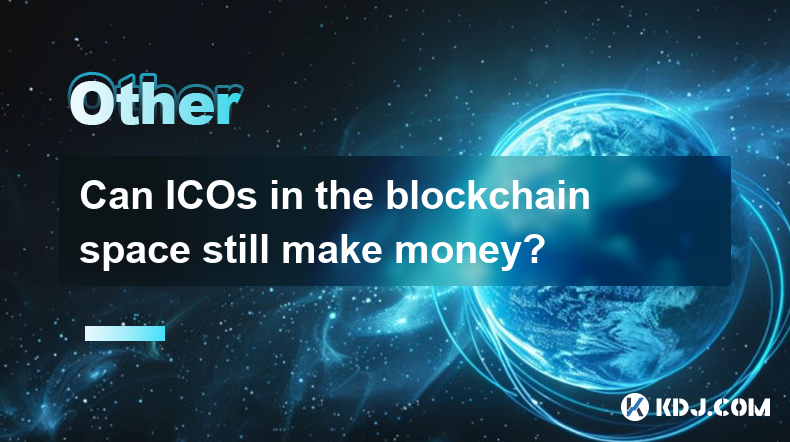
Can ICOs in the blockchain space still make money?
Apr 17,2025 at 08:29pm
The landscape of Initial Coin Offerings (ICOs) in the blockchain space has evolved significantly since their peak in 2017 and 2018. Despite the increased regulatory scrutiny and the rise of alternative fundraising methods like Security Token Offerings (STOs) and Initial Exchange Offerings (IEOs), ICOs can still be a viable way to raise funds and generat...

Can the application of blockchain in supply chain finance bring benefits?
Apr 15,2025 at 04:00pm
Can the application of blockchain in supply chain finance bring benefits? The integration of blockchain technology into supply chain finance has garnered significant attention in the cryptocurrency and financial sectors. This article explores how blockchain can potentially revolutionize supply chain finance, detailing its benefits and providing a compre...
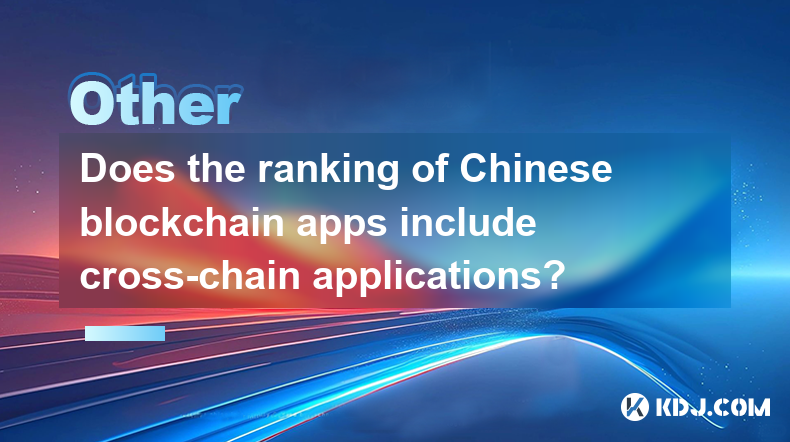
Does the ranking of Chinese blockchain apps include cross-chain applications?
Apr 14,2025 at 04:00pm
The ranking of Chinese blockchain apps is a comprehensive evaluation that takes into account various aspects such as user base, transaction volume, and technological innovation. A pertinent question arises regarding whether these rankings include cross-chain applications. Cross-chain applications, which allow different blockchain networks to interact an...
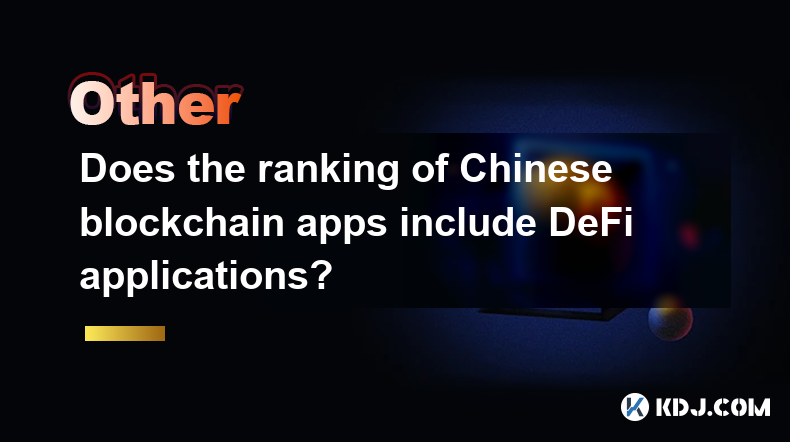
Does the ranking of Chinese blockchain apps include DeFi applications?
Apr 15,2025 at 06:57am
The ranking of Chinese blockchain apps is a comprehensive list that showcases the most popular and influential applications within the cryptocurrency ecosystem. One question that often arises is whether these rankings include DeFi applications. To answer this, we need to delve into the specifics of how these rankings are compiled and what types of appli...
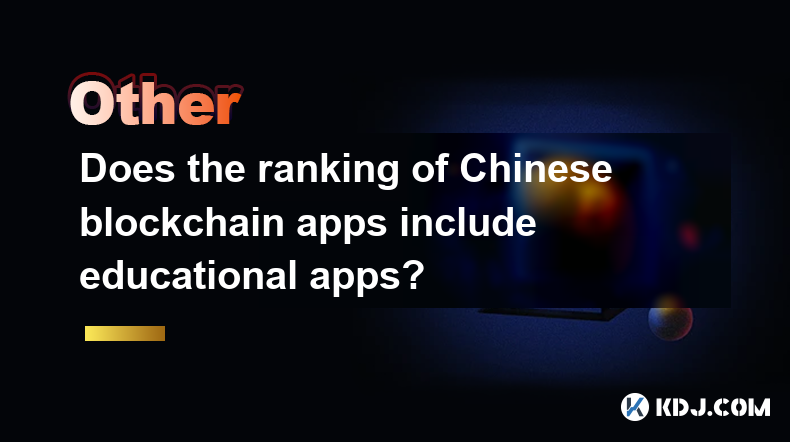
Does the ranking of Chinese blockchain apps include educational apps?
Apr 16,2025 at 03:35am
The ranking of Chinese blockchain apps often includes a variety of categories, from finance and gaming to social networking and beyond. One question that frequently arises is whether these rankings include educational apps. To address this, we need to delve into the specifics of how blockchain apps are categorized and ranked in China, and whether educat...
Does the ranking of Chinese blockchain apps include enterprise-level applications?
Apr 15,2025 at 06:42am
The ranking of Chinese blockchain apps often includes a variety of applications, ranging from consumer-focused to enterprise-level solutions. Understanding the scope and criteria for these rankings is essential to determine if enterprise-level applications are included. This article delves into the specifics of how Chinese blockchain app rankings are co...

Can ICOs in the blockchain space still make money?
Apr 17,2025 at 08:29pm
The landscape of Initial Coin Offerings (ICOs) in the blockchain space has evolved significantly since their peak in 2017 and 2018. Despite the increased regulatory scrutiny and the rise of alternative fundraising methods like Security Token Offerings (STOs) and Initial Exchange Offerings (IEOs), ICOs can still be a viable way to raise funds and generat...

Can the application of blockchain in supply chain finance bring benefits?
Apr 15,2025 at 04:00pm
Can the application of blockchain in supply chain finance bring benefits? The integration of blockchain technology into supply chain finance has garnered significant attention in the cryptocurrency and financial sectors. This article explores how blockchain can potentially revolutionize supply chain finance, detailing its benefits and providing a compre...

Does the ranking of Chinese blockchain apps include cross-chain applications?
Apr 14,2025 at 04:00pm
The ranking of Chinese blockchain apps is a comprehensive evaluation that takes into account various aspects such as user base, transaction volume, and technological innovation. A pertinent question arises regarding whether these rankings include cross-chain applications. Cross-chain applications, which allow different blockchain networks to interact an...

Does the ranking of Chinese blockchain apps include DeFi applications?
Apr 15,2025 at 06:57am
The ranking of Chinese blockchain apps is a comprehensive list that showcases the most popular and influential applications within the cryptocurrency ecosystem. One question that often arises is whether these rankings include DeFi applications. To answer this, we need to delve into the specifics of how these rankings are compiled and what types of appli...

Does the ranking of Chinese blockchain apps include educational apps?
Apr 16,2025 at 03:35am
The ranking of Chinese blockchain apps often includes a variety of categories, from finance and gaming to social networking and beyond. One question that frequently arises is whether these rankings include educational apps. To address this, we need to delve into the specifics of how blockchain apps are categorized and ranked in China, and whether educat...

Does the ranking of Chinese blockchain apps include enterprise-level applications?
Apr 15,2025 at 06:42am
The ranking of Chinese blockchain apps often includes a variety of applications, ranging from consumer-focused to enterprise-level solutions. Understanding the scope and criteria for these rankings is essential to determine if enterprise-level applications are included. This article delves into the specifics of how Chinese blockchain app rankings are co...
See all articles























































































